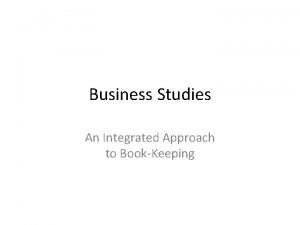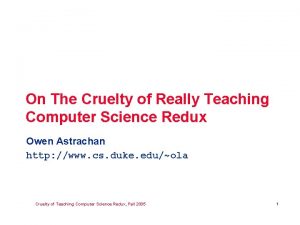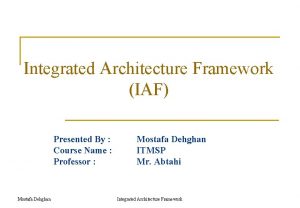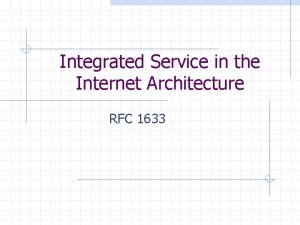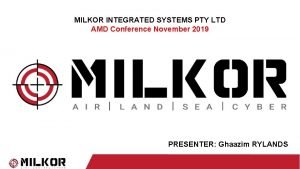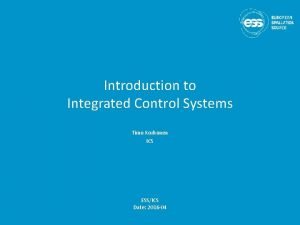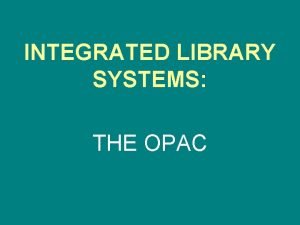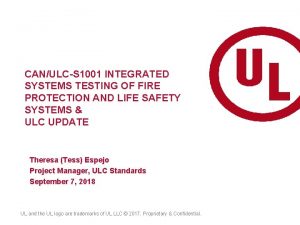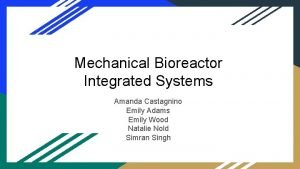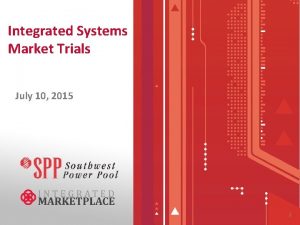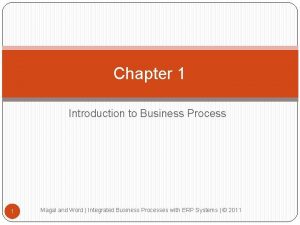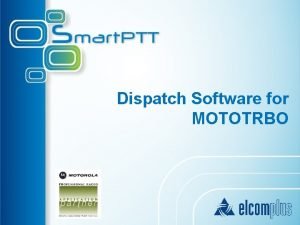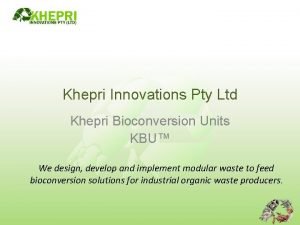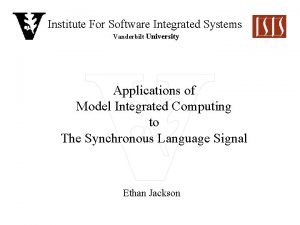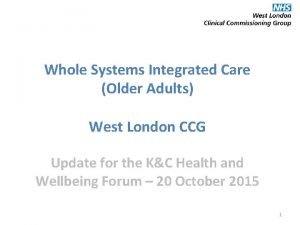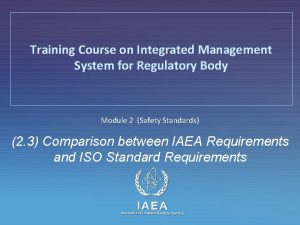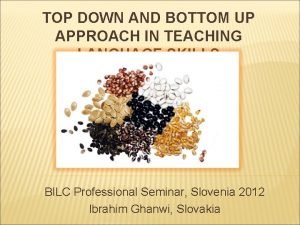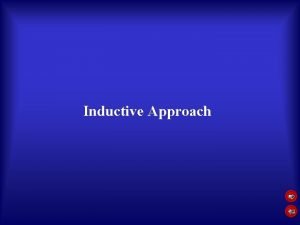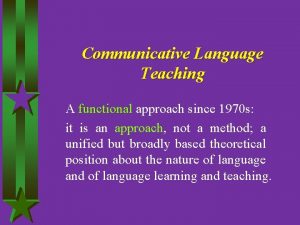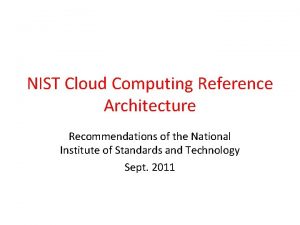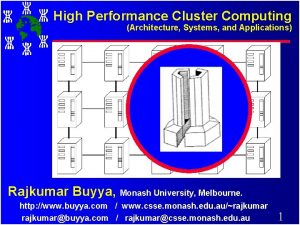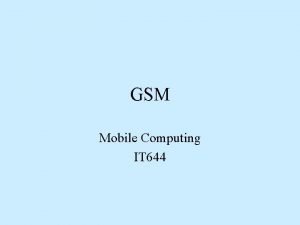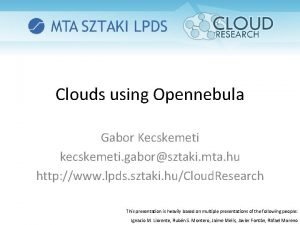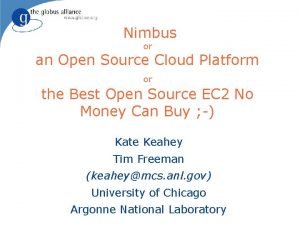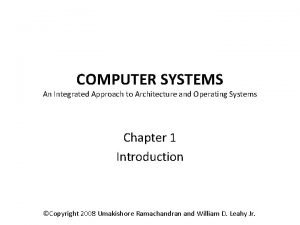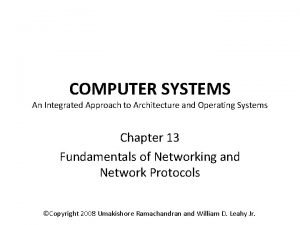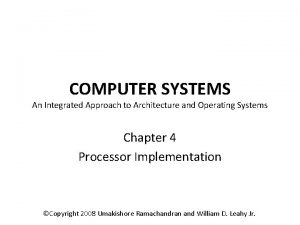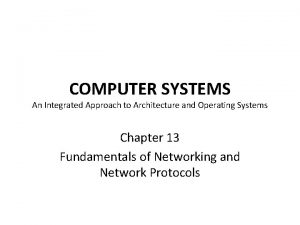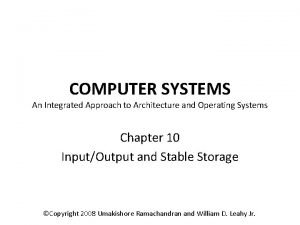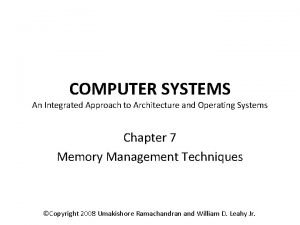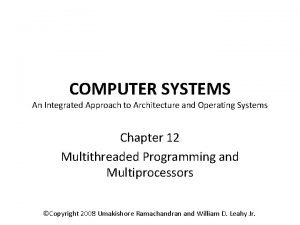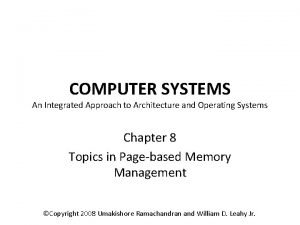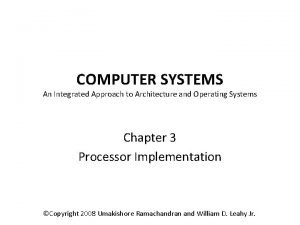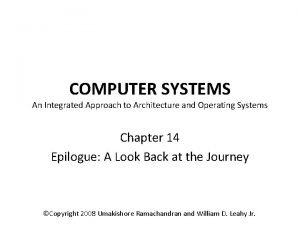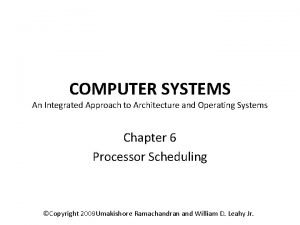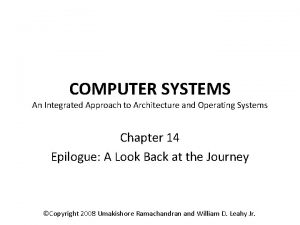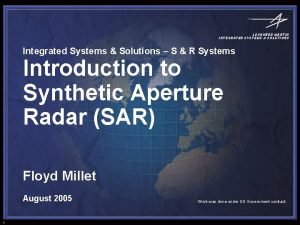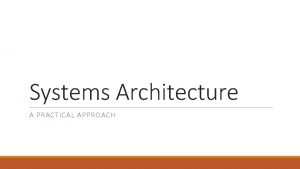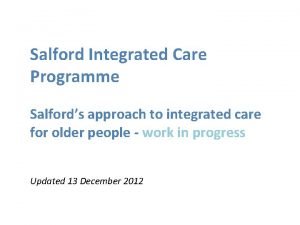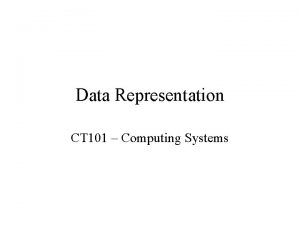An Integrated Approach to Teaching Computing Systems Architecture



































- Slides: 35

An Integrated Approach to Teaching Computing Systems Architecture Kishore Ramachandran & Bill Leahy College of Computing Georgia Institute of Technology

Outline • Traditional approach • Pedagogy of new approach • Where does it fit and how do we put it in practice? • Experience at Tech • Evaluating the pedagogy • Challenges • Comparison to other pedagogical models • Concluding remarks

Traditional Approach • Stovepipe model – Architecture and OS as distinct courses usually in the junior/senior years • Georgia Tech – Followed similar model until 1999 – Two junior level courses one on OS and the other on architecture

What is wrong with the traditional approach? • Symbiotic relationship missed – High level language and instruction sets – OS abstractions and processor – Network protocols and physical network – Students get this? • Not if compartmentalized • Gap between the time when the courses are taken – Concepts forgotten • Connections not seen at all by the students most of the time

Why change? • Problems with the traditional approach • Changing CS scene – New areas evolving – Graphics, visualization, HCI – Need rethinking of “core” • UG research involvement – Need to infuse interest early – Entry level for systems research high

New approach • Excitement of middle-school kids – What is inside a box? – What makes it play cool music or video games? • An integrated course – Combining OS and architecture • Goal of the course – “Unraveling the box” – Take the journey together exploring hardware and the OS abstractions – Emphasize connectedness

Pedagogy of new approach • Present what is “inside a box” – – – Processor module Memory module I/O and storage module Parallel module Network module • Key differentiator – Concomitant treatment of hardware and software in each module

Pedagogical style • Discovery as opposed to indoctrination or instruction • Top down approach – Start with problem to be solved – Explore solution space together • Example: – What is memory management? • Understand the need first • Discover the software issues and the corresponding hardware issues • Story telling approach – Keeps the student interest alive

Processor module • HLL constructs and their influence on instruction-set design • Simplementation followed by performanceconscious pipelined implementation • Process abstraction in OS and processor scheduling

Memory module • Memory management in OS • Architectural issues • Memory hierarchies

I/O and storage module • Program discontinuities including interrupts, traps, and exceptions – Processor mechanisms – OS mechanisms • Devices and device drivers • Emphasis on disk subsystem – Storage abstraction – File system fundamentals

Parallel module • Introduce threads as a programming construct • OS issues for supporting parallel programming • Architectural issues for supporting parallel programming

Network module • Evolution of networking hardware • Network protocol stack

Connecting the different modules • HLL constructs lead to design of instruction-set for LC-2200 • Processor implementation of LC-2200 • Memory management assists to LC-2200 • Interrupt and DMA support to LC-2200 • ……

Why parallelism in a first course? • Our motivation then (circa 98) – Love affair of CS with parallelism • PL and concurrency • OS and concurrency – Enablers in the 90’s • Java, MT OS, multiple CPUs in desktops • In hindsight now – Multicore CPUs – Multithreading as a programming concept in intro courses

Why networking in a first course? • “box” without connectivity is no good today • Protocol stack is an integral part of any OS • Our motivation – Understand evolution of networking gear – Understand mechanisms needed in protocol stack – Understand how a “box” avails of network services

Where does this course fit? • Assumed knowledge – Logic design, assembly language, and C programming • New course is a first systems course – Preferably in sophomore year • What follows? – Advanced architecture, OS, networking courses – For those following other pursuits • Sufficient exposure to “core”

Putting this pedagogical style in practice • 4 credit-hour semester course or 5 -credit hour quarter course • 45 hours of lecture – Roughly 9 hours for each module (some more than others) • 60 -90 hours of unsupervised lab time for projects

Experience at Georgia Tech • CS 2200 introduced in Fall 1999 • Project component for each module – Concepts “get in” via projects – Collaboration allowed • Key is “learning” – Creativity in evaluation

Evaluating the pedagogy • CS students hardware-averse • OS and hardware together makes “sense” – Hardware design as an algorithmic exercise • Successful internships – Anecdotal evidence from industries and students • Concepts learned early apply to other domains (e. g. web caching)

• Students better prepared for advanced courses • Informal poll – At beginning of course • 10% interested in the course – At end of course • Majority feel the course was useful and important • Increased interest in systems – Number of UG students doing research in systems

Other reasons why this is a good approach • Allows curricular innovation • GT CS has been a leader of innovation – Evidence • New Threads. TM approach • Chapter 7, Pages 309 -315, “The Right Stuff, ” from THE WORLD IS FLAT: UPDATED AND EXPANDED EDITION, by Thomas L. Friedman

Meeting the Challenges • Textbook – Good books available for the stovepipe model – None for an integrated model • We developed comprehensive notes and slides – Used standard textbooks as background • Responding to students – Turned our courseware into online textbook in 2005 • To match the style and content • Available to the community • In use for 8 consecutive semesters (including summers)

Adopting the pedagogical style • Online textbook • Extensive online slides • Several detailed project ideas from 7+ years of teaching this course • Several problem sets and model exams online • In short – Painless transition from stovepipe model to this one

Comparison to other recent pedagogical models • Patt and Patel – Logic design, assembly language, plus C – Ideal as a pre-req for our course • Bryant and O’Hallaron – Programmer’s perspective – Goal • How to create “power programmers”? • Important but different from our focus – Best applied to senior level UG – A worthy follow on to our course

• Saltzer and Kaashoek – System building blocks that appear in different large complex software systems – Goal • How to prepare students who can create modular software systems? – A worthy follow on to our course

Concluding remarks • An integrated approach to teaching computer system architecture at sophomore level • Been in practice at GT for 7+ years • Online textbook, slides, project ideas, and tools available for the whole community

Applause!!!


Project: Processor Design • Students given datapath 90% complete • Project entails – Completing the datapath – Writing micro-code for implementing LC-2200 instruction set – Circuit design using Logic. Works

Project: Interrupts and I/O • Students supplied with LC-2200 simulator and LC-2200 assembler • Project entails – Adding circuitry to project 1 for handling interrupts – Enhancing the simulator to deal with interrupts – Writing an interrupt handler (in LC 2200 assembly) to work with the enhanced simulator

Project: Virtual memory subsystem • Students supplied with a processor plus memory system simulator • Project entails – Developing a page-based VM system on top – Experimenting with different page replacement algorithms

Project: MT OS • Students provided with a processor plus memory system simulator • Project entails – Implementing multithreaded OS modules for managing the CPU and I/O scheduling queues – Parallel programming using pthreads – Experimenting with different CPU scheduling algorithms

Project: Reliable Transport Layer • Students provided with a simulated network layer • Project entails – Implementing a reliable transport that deals with • Packet corruption • Lost packets • Out-of-order delivery of packets – Parallel programming using pthreads

 Integral product architecture example
Integral product architecture example Types of modular architecture
Types of modular architecture Conventional computing and intelligent computing
Conventional computing and intelligent computing An integrated approach to business studies
An integrated approach to business studies On the cruelty of really teaching computer science
On the cruelty of really teaching computer science Phases of micro teaching
Phases of micro teaching Integrated architecture framework
Integrated architecture framework Integrated architecture framework
Integrated architecture framework Integrated services architecture
Integrated services architecture Milkor integrated systems
Milkor integrated systems Ics integrated control systems
Ics integrated control systems Library integrated systems
Library integrated systems Ulc-s1001
Ulc-s1001 Adams integrated systems
Adams integrated systems Integrated systems market
Integrated systems market Introduction to business process
Introduction to business process Mototrbo dispatch software
Mototrbo dispatch software Biov online kepri
Biov online kepri Ims360
Ims360 Institute for software integrated systems
Institute for software integrated systems St charles integrated care centre
St charles integrated care centre Integrated management systems training north america
Integrated management systems training north america Bottom-up approach in reading
Bottom-up approach in reading Inductive teaching approach
Inductive teaching approach Techniques of direct method
Techniques of direct method Demonstration method for deductive method
Demonstration method for deductive method What is language-based approach
What is language-based approach Functional communicative approach
Functional communicative approach Bottom up approach in listening
Bottom up approach in listening Language
Language Inductive reasoning deductive reasoning
Inductive reasoning deductive reasoning Nist cloud computing security reference architecture
Nist cloud computing security reference architecture Cluster computing architecture
Cluster computing architecture Normal burst in gsm
Normal burst in gsm Opennebula architecture
Opennebula architecture Nimbus cloud computing
Nimbus cloud computing



